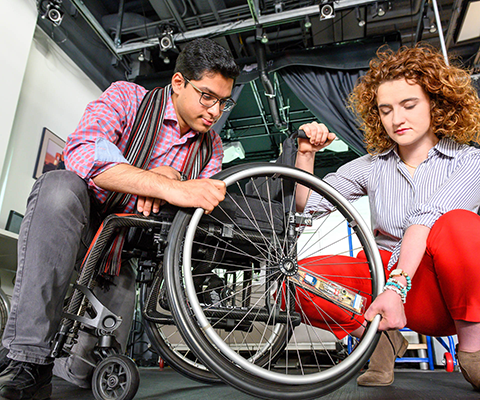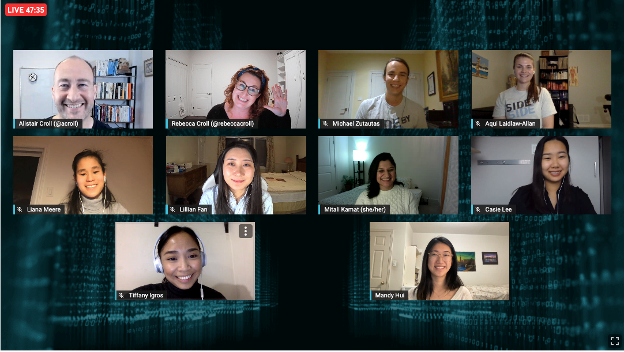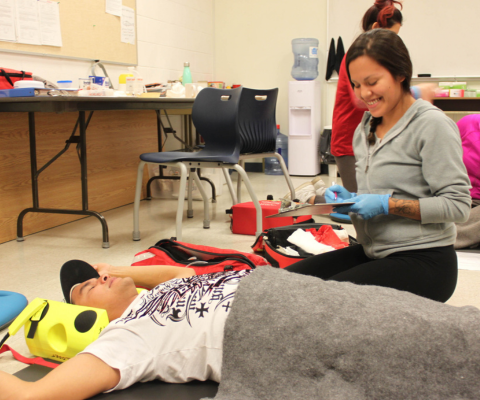Inventing our way to an accessible future

December 3rd is International Day of Persons with Disabilities—an occasion to reflect on how we can make the world a more accessible and inclusive place.
Some of the best and brightest from universities across Canada have invented creative solutions to problems faced by those with disabilities. Here are a few breakthrough inventions and winners of the 2021 Innovative Designs for Accessibility (IDeA) student competition.
Wardrobe management for people with visual disabilities
While many of us take for granted the ability to pick out clothing, it can be challenging for someone with a visual impairment to identify colours, match garments and read wash label instructions. Closet, a label system and app invented by students from Carleton University, empowers people with visual disabilities to manage their wardrobe independently.
An arm brace for independent browsing
Inspired by a young girl living with Athetoid Cerebral Palsy named Oriana King, a team of students from Memorial University invented the Damped Medical Arm Brace System. This invention allows people like Oriana, who rely on family and caregivers to hold her arm steady when using a tablet or other electronic devices, to do so independently.
Sexual health, education, love and support
Upon learning that people with disabilities disproportionately experience sexual and domestic violence, a team of Brock University students set out to provide tools and resources to people with disabilities that empower them to help end sexual violence in the community. They created an app—the first of its kind—that provides sexual violence support, sexual health education and self-care practices tailored to people with disabilities.
A helping arm
Independent living is critical for wheelchair users’ long-term health and dignity. While wheelchairs themselves offer greater mobility and quality of life, it can still be challenging to complete tasks, such as carrying heavy bags. The Biomedical Engineering Design (BMED) team at the University of Victoria designed a mechanical, retractable, user-controlled arm to help make tasks like this easier for wheelchair users.
Hearing-impaired drivers detect emergency vehicles
Safer streets are in everyone’s interest, and making sure drivers are aware of emergency vehicles is essential to improving road safety. To help drivers who may not be able to hear sirens navigate safely on the road, a team of University of Alberta students invented the Hear2There device. The technology contains sensors that detect sirens and activates an LED light that alerts the driver to the nearby emergency vehicle.
The SlapBra for easier dressing
Every day, people living with only one functional arm due to chronic conditions such as arthritis, stroke and amputation face challenges dressing themselves independently. While many dressing aids exist, a team of University of Toronto students noticed that not much existed to help people put on bras. Their invention, the SlapBra, makes it easy and comfortable to don, fasten and remove a bra with one functional arm.
Learn more about the winners of the 2021 IDeA competition.
About Universities Canada
Universities Canada is the voice of Canada’s universities at home and abroad, advancing higher education, research and innovation for the benefit of all Canadians.
Media contact:
Lisa Wallace
Assistant Director, Communications
Universities Canada
[email protected]
Tagged: Equity, diversity and inclusion, Research and innovation





